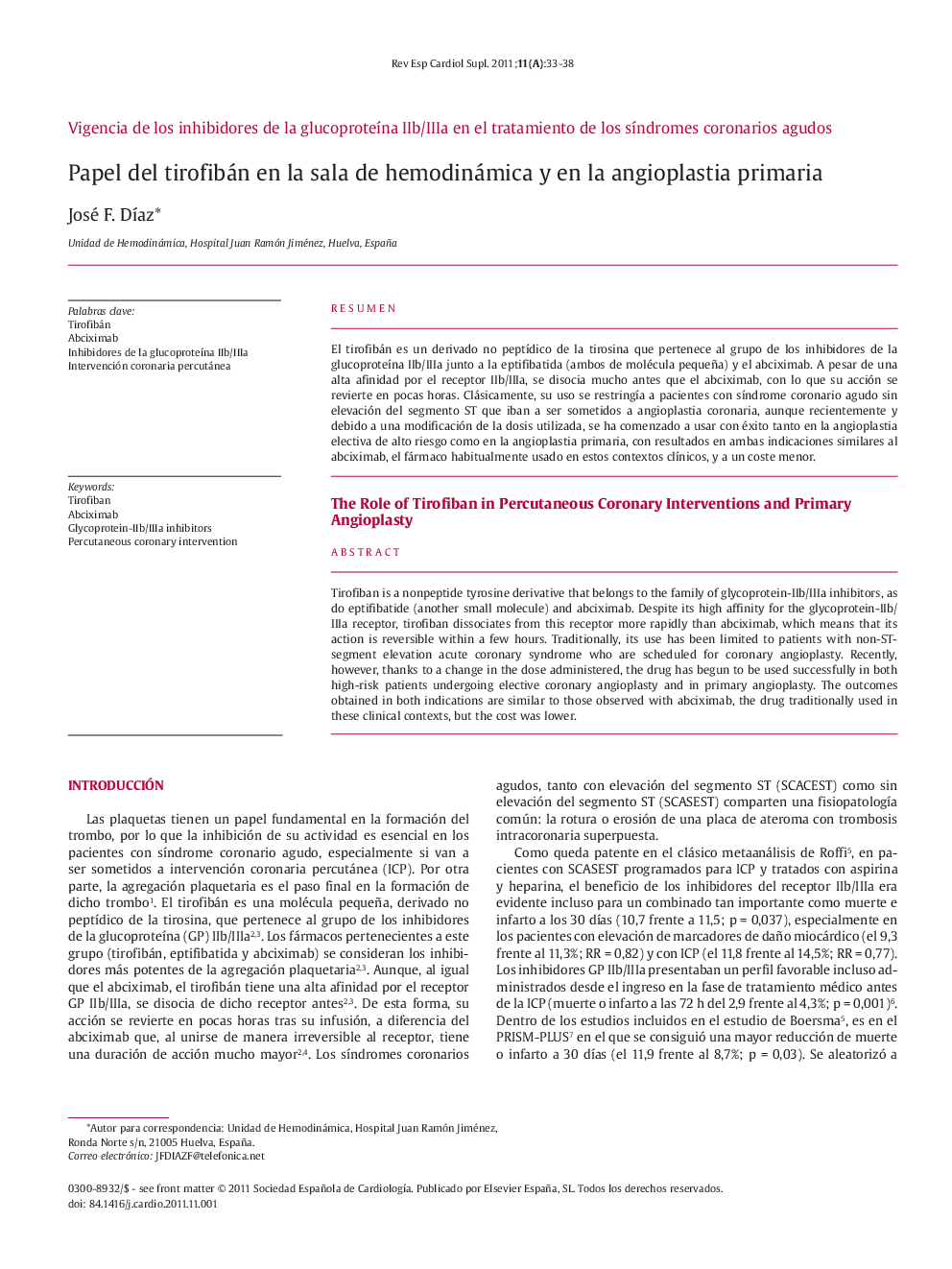| Article ID | Journal | Published Year | Pages | File Type |
|---|---|---|---|---|
| 3019533 | Revista Española de Cardiología Suplementos | 2011 | 6 Pages |
ResumenEl tirofibán es un derivado no peptídico de la tirosina que pertenece al grupo de los inhibidores de la glucoproteína IIb/IIIa junto a la eptifibatida (ambos de molécula pequeña) y el abciximab. A pesar de una alta afinidad por el receptor IIb/IIIa, se disocia mucho antes que el abciximab, con lo que su acción se revierte en pocas horas. Clásicamente, su uso se restringía a pacientes con síndrome coronario agudo sin elevación del segmento ST que iban a ser sometidos a angioplastia coronaria, aunque recientemente y debido a una modificación de la dosis utilizada, se ha comenzado a usar con éxito tanto en la angioplastia electiva de alto riesgo como en la angioplastia primaria, con resultados en ambas indicaciones similares al abciximab, el fármaco habitualmente usado en estos contextos clínicos, y a un coste menor.
Tirofiban is a nonpeptide tyrosine derivative that belongs to the family of glycoprotein-IIb/IIIa inhibitors, as do eptifibatide (another small molecule) and abciximab. Despite its high affinity for the glycoprotein-IIb/IIIa receptor, tirofiban dissociates from this receptor more rapidly than abciximab, which means that its action is reversible within a few hours. Traditionally, its use has been limited to patients with non-ST-segment elevation acute coronary syndrome who are scheduled for coronary angioplasty. Recently, however, thanks to a change in the dose administered, the drug has begun to be used successfully in both high-risk patients undergoing elective coronary angioplasty and in primary angioplasty. The outcomes obtained in both indications are similar to those observed with abciximab, the drug traditionally used in these clinical contexts, but the cost was lower.
